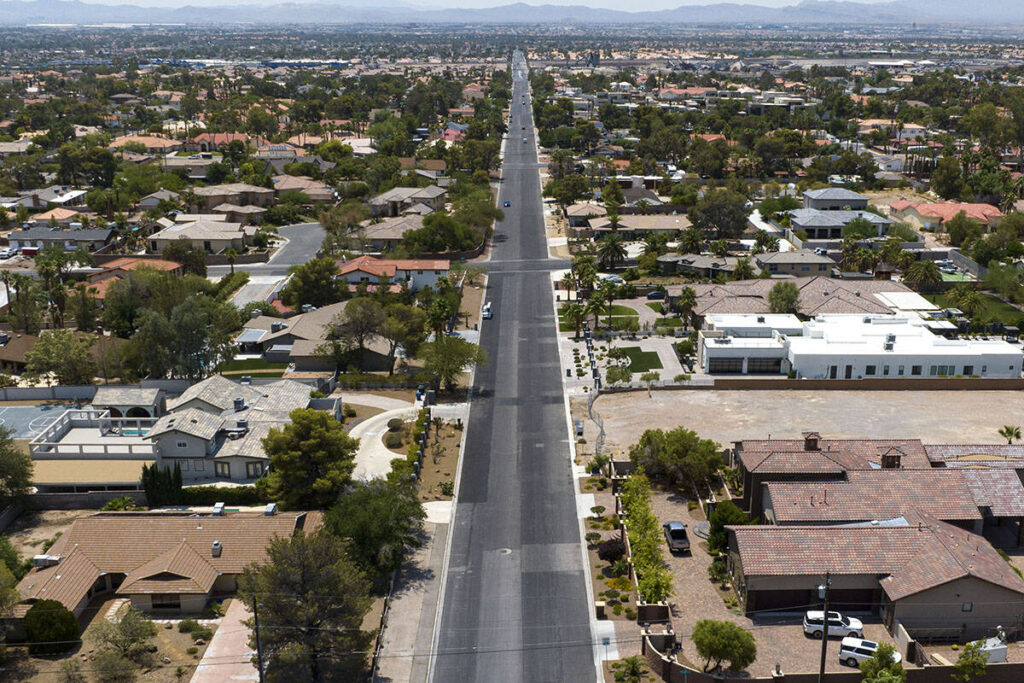
The Las Vegas Valley is experiencing a significant increase in home listings, leading the nation in year-over-year growth, yet prices remain stubbornly high. According to a recent study by Realtor.com, active listings surged by 77.6 percent in June 2023 compared to the previous year, outpacing the national growth rate of 28.9 percent. This trend raises questions about the dynamics of the local housing market, especially as the area has seen a surge in available properties.
Jake Krimmel, a senior economist at Realtor.com, highlights the remarkable nature of this increase. He notes that the Las Vegas Valley’s growth in listings is nearly double that of the Western United States. “Homes are sitting on the market 11 days longer than the national average, which is five days,” he explained, indicating a shift towards a more buyer-friendly market.
Despite this influx of listings, home prices have risen to a record high of $485,000. This phenomenon is attributed to several factors, including elevated interest rates that have sidelined many potential buyers. Additionally, homeowners who secured lower mortgage rates during the pandemic are hesitant to sell, thereby limiting the available inventory of new homes.
The lack of new construction, compounded by the presence of federally controlled land in the valley, has further constrained supply. At the same time, a growing population and an expanding luxury real estate sector are keeping prices elevated. Krimmel emphasized that buyers currently have more choices and time, leading to a competitive environment among sellers. He noted that approximately 27 percent of listings have experienced price reductions, which is about 6 percentage points above the national average, signaling a potential softening of the market.
Interestingly, traditional market principles of supply and demand appear to be misaligned in Las Vegas. Normally, a significant rise in listings would lead to a decline in prices, but this has not happened yet. “List prices have only dropped by 1 percent year over year,” Krimmel stated. “On a square foot adjusted basis, the decline is just 0.4 percent.” This trend aligns broadly with national averages, suggesting that despite increased inventory, prices are not dropping significantly.
Cities such as Austin and Miami have seen more pronounced price declines of 5 to 6 percent year over year. Krimmel pointed out that these areas experienced substantial building booms, which Las Vegas has not matched in relative terms. He urged close observation of how sellers and buyers in Las Vegas react to the current inventory levels, which are 36 percent above pre-pandemic levels. In contrast, national inventory remains about 13 percent below those norms.
Looking ahead, the key question remains whether motivated sellers will reduce prices or hold out in hopes of better market conditions. As the Las Vegas Valley navigates these complex dynamics, the outcome will significantly impact both buyers and sellers in the region.







